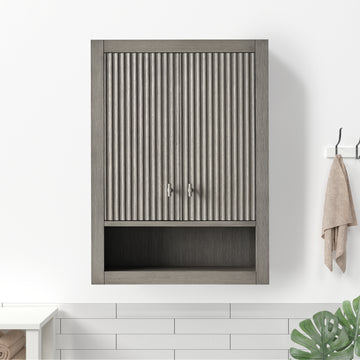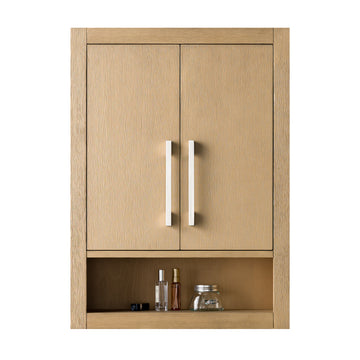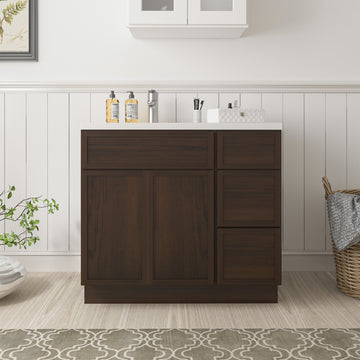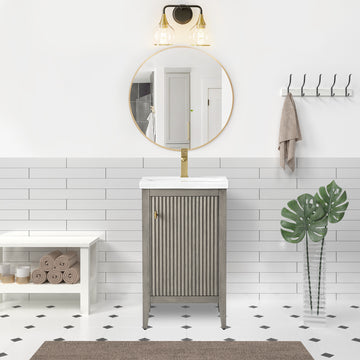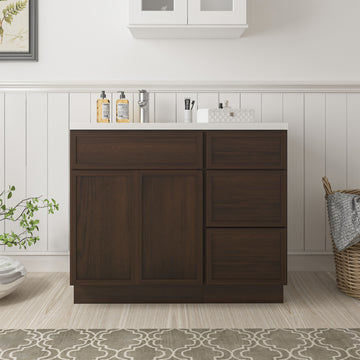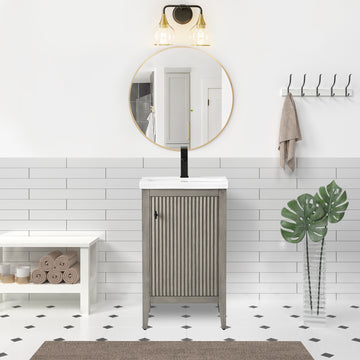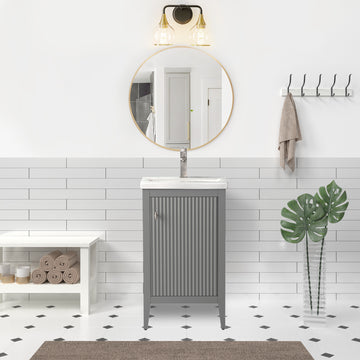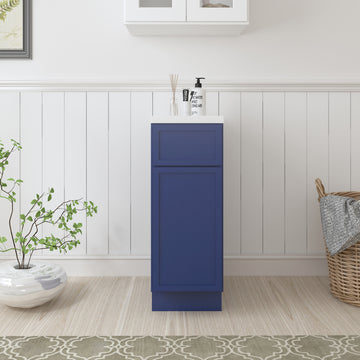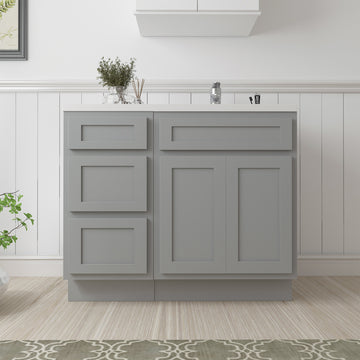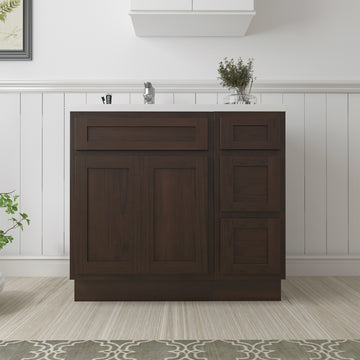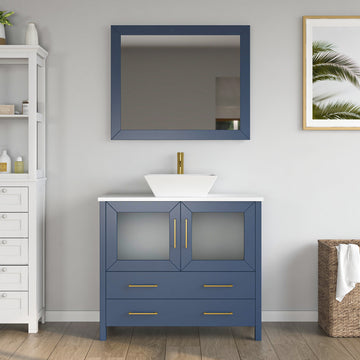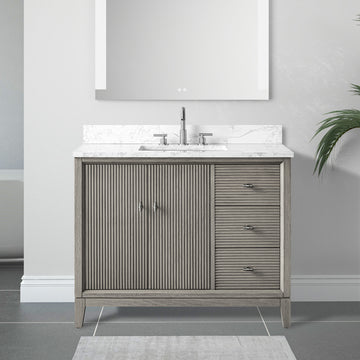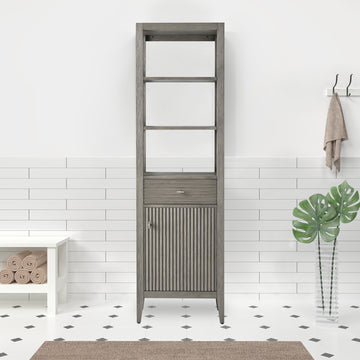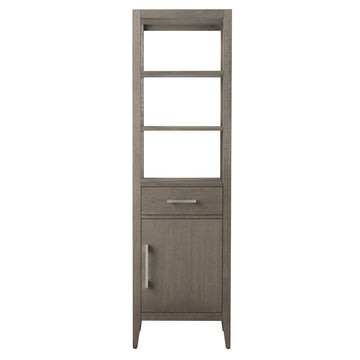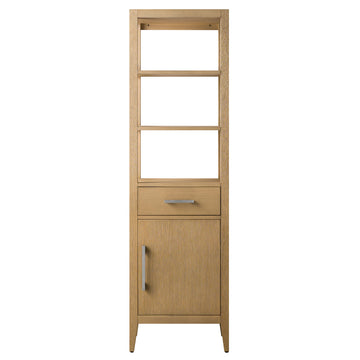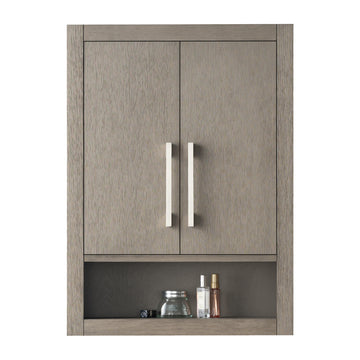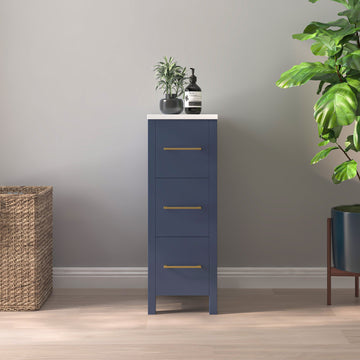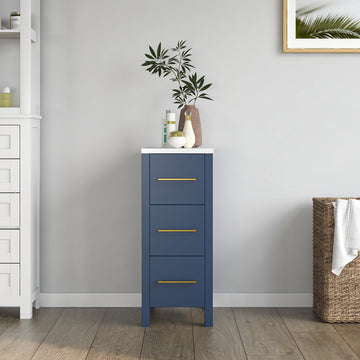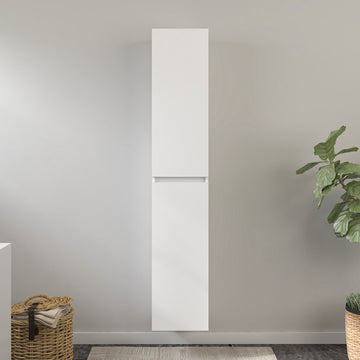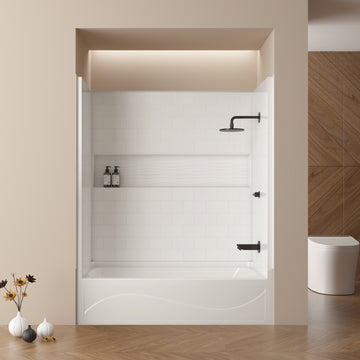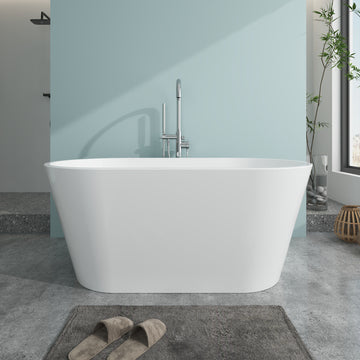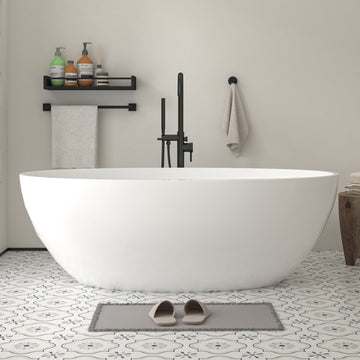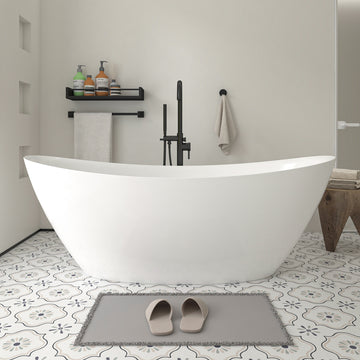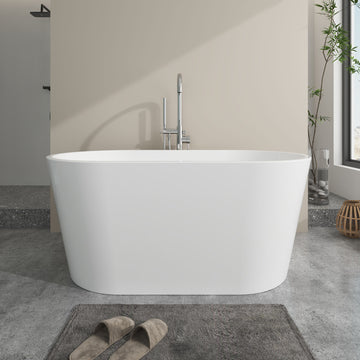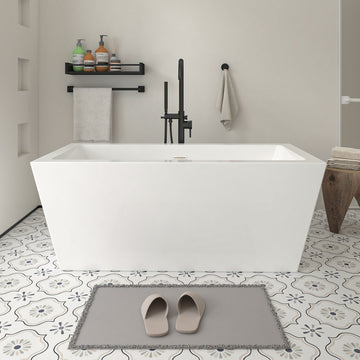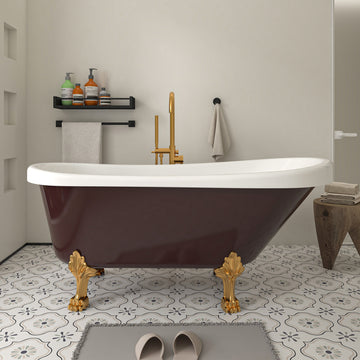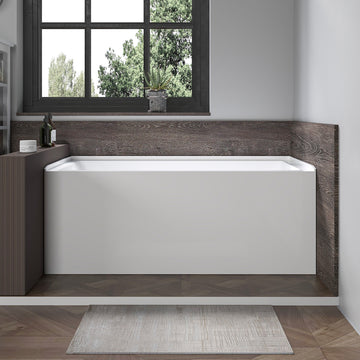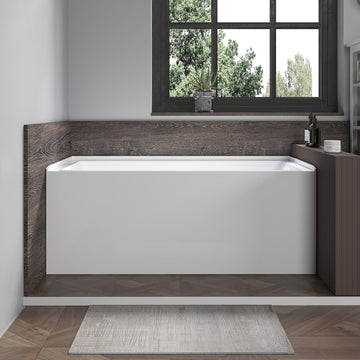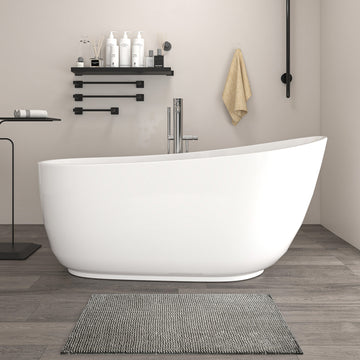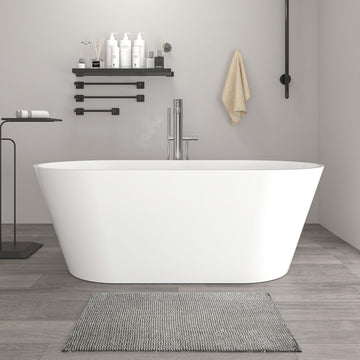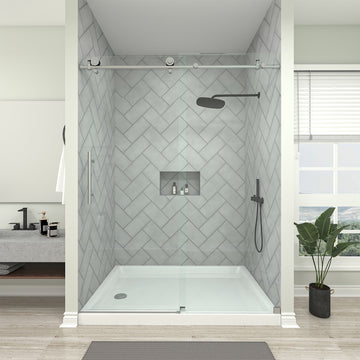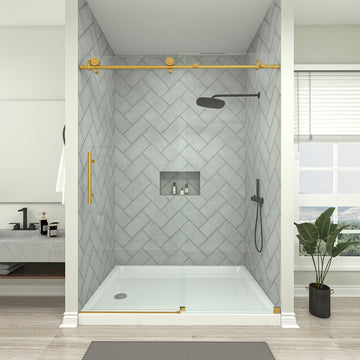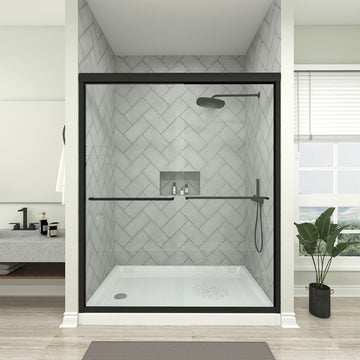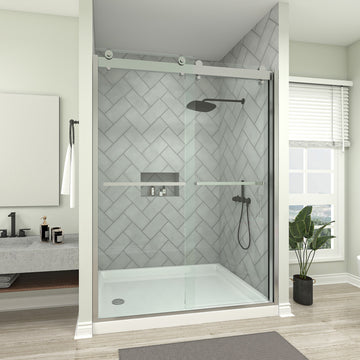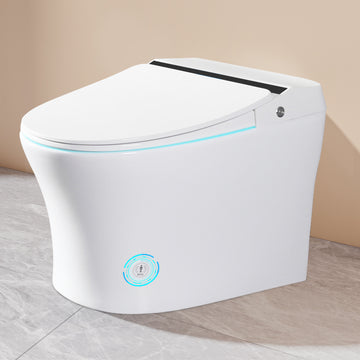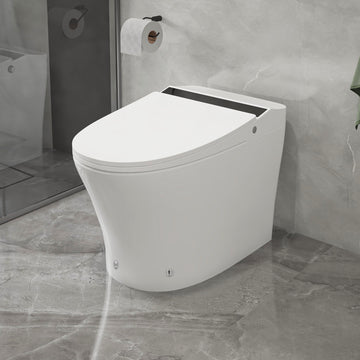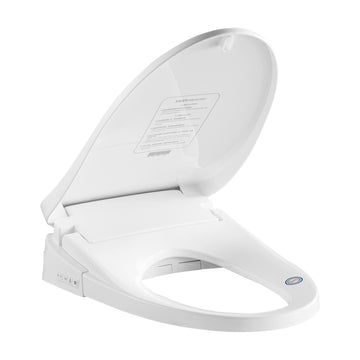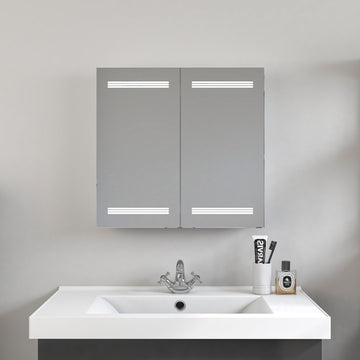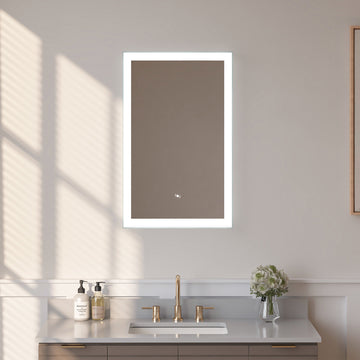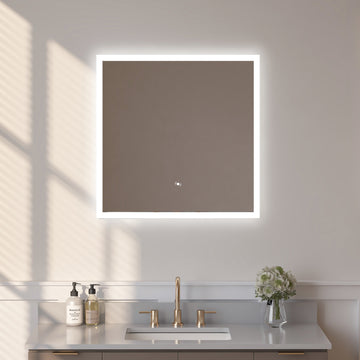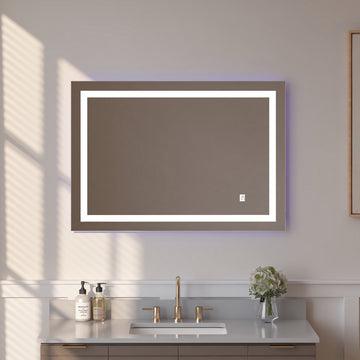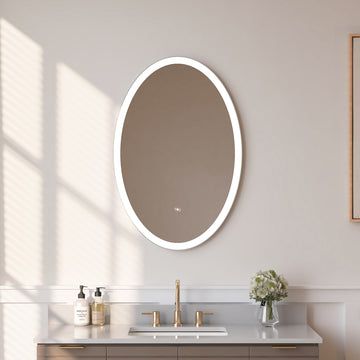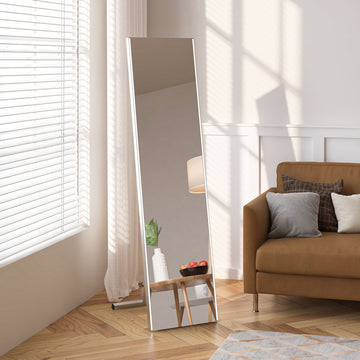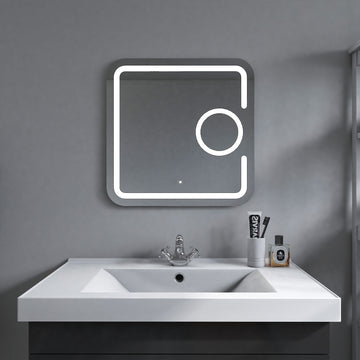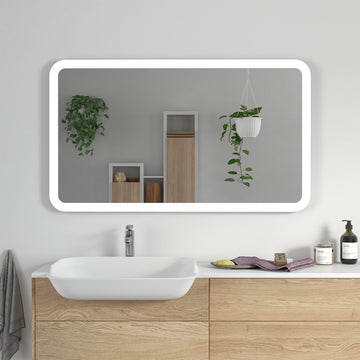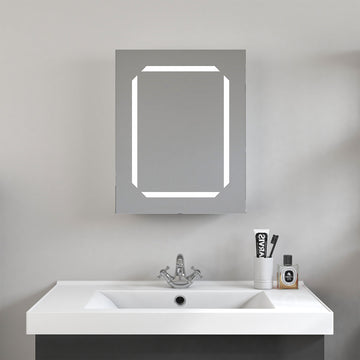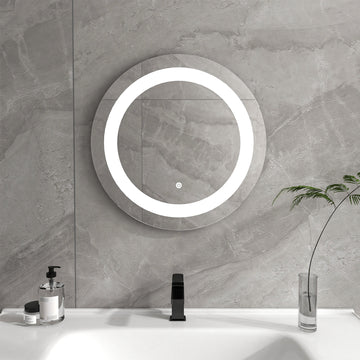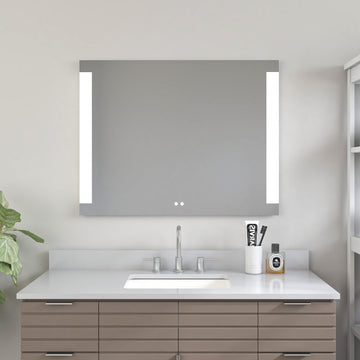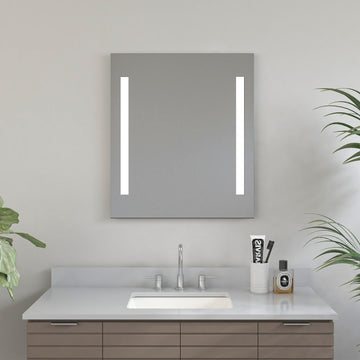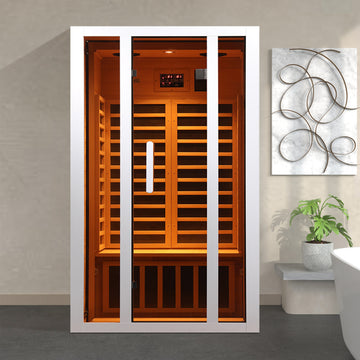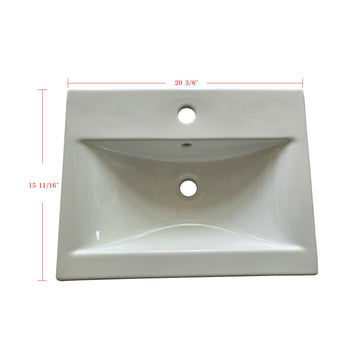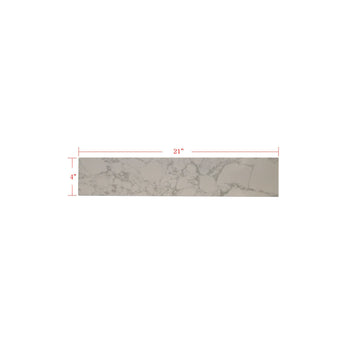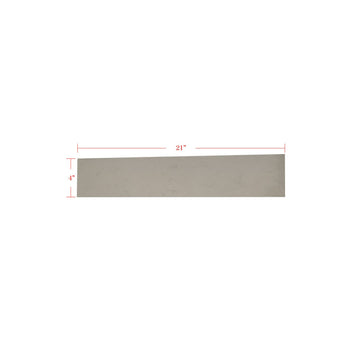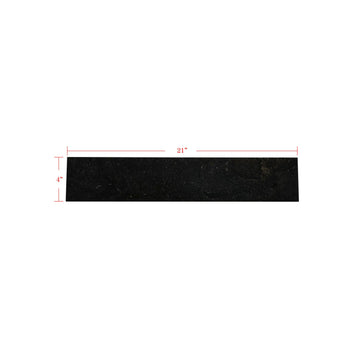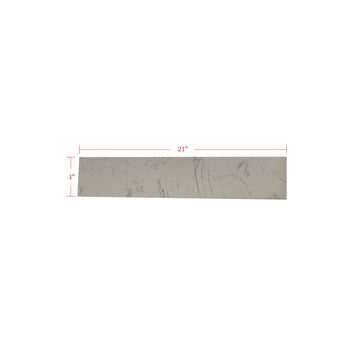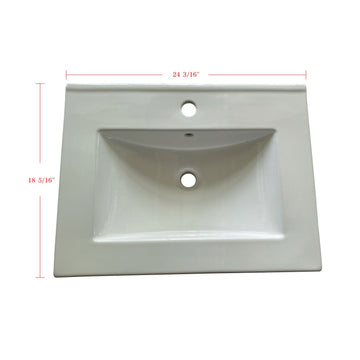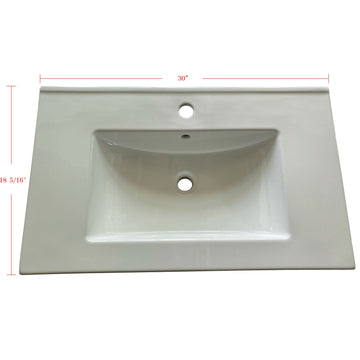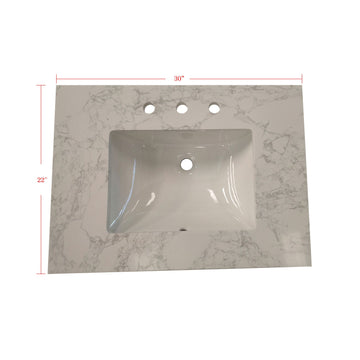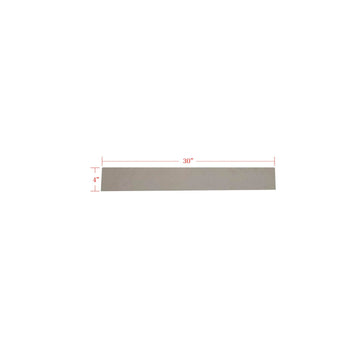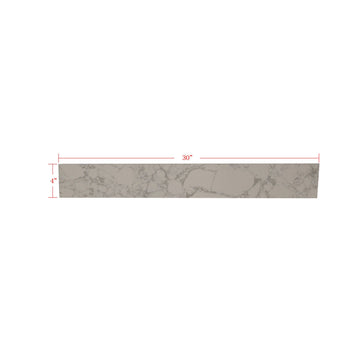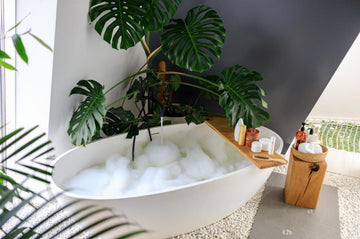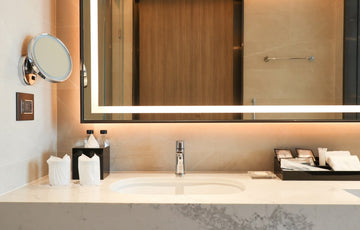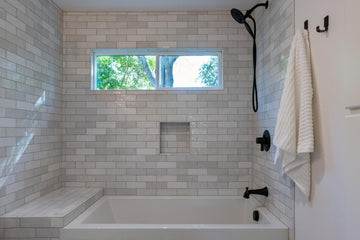It’s a bit ridiculous, to say the least, that even the size of your vanity mirror requires careful consideration when making a purchase. But it really does matter. A mirror that's too large can crowd the space, while one that's too small may feel impractical. Most importantly, aesthetics are the main concern. The right size should visually align with your vanity and provide enough reflection without overwhelming the room.
In this guide, we’ll break down standard vanity mirror sizes. Including how to place them properly, and what to keep in mind before making your choice.
Standard vanity mirror sizes
While there’s no universal rule for vanity mirror dimensions, most fall within a common size range that works well in standard bathroom layouts. The general guideline is that the mirror should not be wider than the vanity it hangs above. Ideally, it should be about two to four inches narrower on each side. This creates a balanced look, keeps the mirror proportional to the vanity, and allows space for wall-mounted lighting if needed.
For single-sink vanities, which are usually 24 to 48 inches wide, mirrors tend to range from 20 to 44 inches wide. The height is more flexible and often depends on ceiling height and how close the lighting is installed, but most bathroom mirrors fall between 28 and 36 inches tall. You want enough vertical space to see your reflection comfortably without stretching or stooping.
Double-sink vanities are wider. They are typically between 60 and 72 inches or more. In these cases, you have two main options. One is to use a single wide mirror that spans most of the vanity’s width, usually between 55 and 66 inches. The other is to hang two separate mirrors over each sink, often around 20 to 30 inches wide each. Both approaches are functional and come down to your style preferences and how much visual openness or definition you want in the design.
It’s also worth briefly noting the standard vanity sizes themselves, since they affect your mirror options. Common widths include 24, 30, 36, 48, 60, and 72 inches. Depth typically ranges from 18 to 21 inches, while height is usually around 32 to 36 inches. Mirrors that echo the width and placement of these vanities tend to look the most cohesive.
Ultimately, these standard sizes offer a good starting point. The right mirror will not only match your vanity but also work with the overall scale of the room and how you use the space daily.
Single vs. double vanity mirror sizes

The size and style of your vanity mirror often depend on whether you have a single or double vanity. Both setups have different spatial needs, and choosing the right mirror configuration can impact how balanced, functional, and visually clean your bathroom feels.
Single vanities typically range from 24 to 48 inches wide. With this setup, most homeowners opt for one centered mirror. The width of the mirror usually sits a few inches inside the width of the vanity. So, for example, a 36-inch vanity would often be paired with a 28- to 34-inch mirror. This keeps the mirror aligned and prevents it from overpowering the space. Height-wise, mirrors are usually in the 28- to 36-inch range, depending on ceiling height and lighting placement. In tighter bathrooms or powder rooms, a taller mirror can make the space feel bigger and brighter.
Double vanities, on the other hand, are larger. Usually starting at 60 inches wide and going up from there. For these, you have two main options: either install one large mirror that spans both sinks or use two separate mirrors, one centered over each basin. A single large mirror (say, 60 to 66 inches wide) creates a more unified look and reflects more light. It also simplifies things if you're using a single overhead light fixture.
Two mirrors, typically between 20 to 30 inches wide each, offer more definition and can give the space a more tailored, symmetrical feel. They also allow for more flexibility with lighting, as you can place sconces between the mirrors or beside them. This option works exceptionally well in more modern or minimalist designs where clean lines and separation are key.
When choosing between these setups, consider the overall style of your bathroom, the amount of wall space available, and the type of lighting arrangement you plan to use. There’s no single correct answer. It’s about choosing what works best for your layout, habits, and visual goals.
Things to consider before deciding on a mirror size
Choosing a vanity mirror isn’t just about matching dimensions; it's also about finding the perfect style. It’s also about how the mirror fits into the overall function and design of your bathroom. Before you buy, consider a few key factors that can help you avoid common mistakes and find a mirror that suits your space perfectly.
Vanity width
The mirror should align with the width of your vanity without hanging past it. Most people aim for a mirror that’s two to four inches narrower than the vanity. This gives the wall space room to breathe and maintains the proportions correctly.
Wall space and ceiling height
Measure the available vertical and horizontal wall space, especially if you have any built-in shelving, tile borders, or light fixtures. In bathrooms with low ceilings, a wide and short mirror might work better. In bathrooms with more vertical room, a taller mirror can draw the eye upward and make the space feel more open.
Lighting setup
Where your lights are placed will determine how tall or wide your mirror can be. If you’re using wall sconces, you’ll need space on either side of the mirror. If your light is mounted above the mirror, it may limit the mirror’s height. Natural lighting from nearby windows can also impact how reflective or shadowy the mirror area feels.
Sink placemen
If your sink isn’t centered on the vanity, this may affect where you place the mirror. In that case, it’s more important to center the mirror over the sink than over the vanity as a whole. For double sinks, make sure mirrors align properly with each basin to avoid awkward gaps or overlaps.
Function vs. design
Do you just need a mirror for basic grooming, or do you want it to be a statement piece? Frameless mirrors offer a clean, minimalist look, while framed options can add texture, color, or architectural detail. Some mirrors also come with built-in storage or lighting, which could change your sizing needs entirely.
Mirror shape
Round, oval, square, or rectangular, shape changes the visual balance. A round mirror might need more wall space around it to feel grounded, while a rectangle can stretch across a wider area and appear more structured. Shape can also influence what size looks appropriate, even if the measurements are technically the same.
When you take these practical and visual elements into account, it becomes much easier to choose a mirror that feels like a natural fit. Not just for your vanity, but for your entire bathroom.
Get the mirror that actually fits

Choosing the right vanity mirror size is about how everything in your bathroom works together. The mirror needs to feel in proportion with the vanity, the lighting, and the overall space. Single vanities typically work best with a single centered mirror, while double vanities offer more flexibility in layout. Either way, the goal is the same: a mirror that feels balanced, functional, and intentional.
Take your time before deciding. Examine your wall space, reflect on how you use your bathroom daily, and consider the kind of visual tone you want to establish. A well-chosen mirror anchors the whole design.
FAQs
Can a vanity mirror be wider than the vanity itself?
While it’s not standard, a mirror that’s slightly wider than the vanity can work in certain situations. Especially in modern or minimalist designs. This approach can create a bold visual effect, but it needs to be done with intention. The mirror should still align well with lighting and wall space, and it should never extend past nearby fixtures, outlets, or furniture. If you’re working with a floating vanity or frameless mirror, going wider may help balance the empty space below. Still, this choice should feel like a stylistic decision, not an accident.
What’s the best mirror size for a bathroom with two vanities side by side?
In bathrooms with two separate vanities—often seen in larger primary bathrooms—it’s common to install individual mirrors over each one. In this case, treat each vanity as its own layout. The same sizing rules apply: keep the mirror slightly narrower than the vanity it serves.
But here’s the important part: make sure both mirrors are identical in size, height, and placement, even if the vanities are slightly different. Mismatched mirror sizes throw off the symmetry and make the room feel disjointed. Lighting should also be mirrored to match.
Do frameless mirrors look larger than framed ones?
Yes, frameless mirrors often appear larger than their framed counterparts, even if they share the same dimensions. That’s because there’s no visual border defining the edge, so the reflection feels more open and seamless.
Frameless mirrors also tend to blend into the wall better, which can be useful in smaller bathrooms or powder rooms where you don’t want extra visual weight. On the other hand, a bold or thick frame can add structure, color contrast, or tie the mirror into cabinetry and finishes. So it’s really a choice between minimalism and definition.
